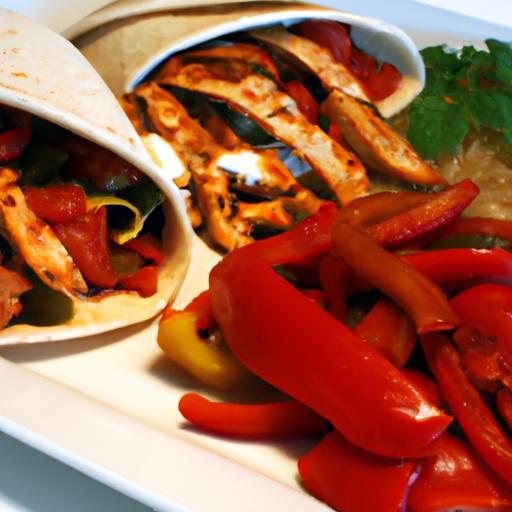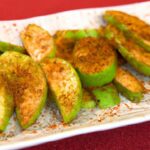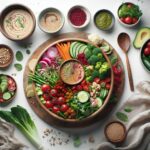There’s something truly magical about roasted vegetables-their vibrant colors, caramelized edges, and deep, rich flavors that transform even the simplest ingredients into a mouthwatering masterpiece. But before your oven works its delicious alchemy, the secret lies in how you cut your veggies. Mastering the art of cutting vegetables perfectly for roasting is not just about aesthetics; it’s the key to unlocking even cooking, irresistible texture, and maximum flavor. Whether you’re a kitchen novice or a seasoned cook, this guide will sharpen your skills, turning humble root veggies, squashes, and more into golden, crispy, tender delights every single time. Get ready to elevate your roasting game with precision, creativity, and confidence!
Master the Art of Cutting Veggies Perfect for Roasting! When it comes to roasting vegetables, choosing the right produce and mastering your knife skills will transform your dish from ordinary to extraordinary. The art lies not just in picking the best veggies but in how you slice them-achieving uniformity ensures every piece cooks evenly, caramelizes beautifully, and bursts with flavor and perfect texture.
Prep and Cook Time
- Preparation: 15 minutes
- Cooking: 25-30 minutes
Yield
Serves 4 as a delicious side dish
Difficulty Level
Easy to Medium – Perfect for beginner to intermediate home cooks ready to level up their roasting game.
Choosing the Right Veggies for Optimal Roasting Results
Root vegetables like carrots, parsnips, and sweet potatoes are classic choices because their natural sugars caramelize beautifully under high heat. Firm vegetables such as cauliflower, broccoli, and Brussels sprouts develop lovely crisp edges without turning mushy. For a touch of moisture and color contrast, include bell peppers or zucchini. Avoid watery veggies like cucumbers, as they won’t roast well and can turn soggy.
Techniques to Achieve Even Cuts and Consistent Cooking
Start by halving or peeling your vegetables. Then, using a sharp chef’s knife or a sturdy serrated knife for tougher skins, cut each piece into uniform sizes. For example, dice carrots into ½-inch cubes or slice zucchini into half-inch rounds. Consistency is key-this ensures all pieces roast at the same rate, preventing some from burning while others remain raw. Using a cutting board with a non-slip grip gives you control and safety during slicing.
The Impact of Size and Shape on Flavor and Texture
Smaller, thinner cuts roast faster and get crispier edges, great for bite-sized snacks or garnishes. Larger chunks retain more moisture inside, offering a soft and tender interior with a caramelized crust. Cubes and wedges give a hearty mouthfeel, perfect for rustic bowls or alongside roasted meats. Consider the vegetable’s natural shape – for example, cutting Brussels sprouts in halves exposes layers for extra caramelization, while slicing sweet potatoes into rounds keeps the texture creamy yet firm.
Essential Tools Every Home Chef Needs for Perfect Veggie Cuts
- Sharp Chef’s Knife: The cornerstone tool for precision and safety.
- Paring Knife: Ideal for peeling and trimming small vegetables.
- Mandoline Slicer: Perfect for uniform thin slices, speeding up prep time.
- Cutting Board with Non-slip Base: Prevents movement, giving you confidence with every cut.
- Vegetable Peeler: For effortlessly removing skins and creating ribbons or curls.
Ingredients
- 2 large carrots, peeled and cut into ½-inch cubes
- 2 parsnips, peeled and cut into ½-inch cubes
- 1 large sweet potato, peeled and cut into 1-inch cubes
- 1 small head cauliflower, cut into bite-sized florets
- 1 cup Brussels sprouts, trimmed and halved
- 2 tablespoons olive oil
- 1 teaspoon kosher salt
- ½ teaspoon freshly ground black pepper
- 1 teaspoon dried thyme or fresh rosemary, finely chopped
Instructions
- Preheat your oven to 425°F (220°C). Line a large baking sheet with parchment paper or lightly grease it.
- In a large bowl, combine all prepared vegetables. Drizzle with olive oil and sprinkle with salt, pepper, and thyme or rosemary.
- Toss gently with your hands or a spatula until every piece is evenly coated in oil and seasoning.
- Spread the veggies out in a single, even layer on the prepared baking sheet. Avoid overcrowding to ensure optimal roasting.
- Roast in the preheated oven for 25-30 minutes, stirring halfway through for even browning. Look for crispy edges and tender interiors.
- Remove from oven and immediately serve or garnish with fresh herbs or a squeeze of lemon juice for brightness.
Chef’s Notes
Variations: Add root vegetables like beets or turnips for earthiness or toss in cherry tomatoes last 10 minutes for a juicy pop. Swap thyme for smoked paprika for a smoky twist.
Substitutions: Use avocado oil for a higher smoke point and subtle flavor or experiment with flavored oils such as garlic-infused olive oil.
Common Issues: If veggies turn out soggy, make sure your cuts are dry before oiling and avoid overcrowding the pan, which traps steam.
Make-Ahead: Cut vegetables a day in advance and store in an airtight container in the fridge to save prep time.
Serving Suggestions
Serve your perfectly roasted veggies as a vibrant side to roasted chicken or grilled steak. For a cozy veggie bowl, layer over quinoa or farro and drizzle with tahini or balsamic glaze. Garnish with toasted nuts or fresh parsley for a pop of texture and color.

| Nutrient | Per Serving |
|---|---|
| Calories | 130 kcal |
| Protein | 3g |
| Carbohydrates | 24g |
| Fat | 4g |
For more insights on roasting techniques and veggie pairings, check out our Complete Guide to Roasting Vegetables. To explore the science behind roasting vegetables, visit Serious Eats’ Food Lab.
Q&A
Q&A: Master the Art of Cutting Veggies Perfect for Roasting!
Q1: Why does the way I cut my veggies matter when roasting?
A1: The cut of your veggies isn’t just about looks-it’s about flavor and texture! Uniform pieces cook evenly, giving you that perfect, caramelized exterior with a tender inside. Uneven cuts can lead to some pieces burning while others remain underdone, stealing the thunder from your roast.
Q2: What’s the ideal size for roasting vegetables?
A2: Aim for bite-sized chunks around 1 to 1.5 inches. This size strikes the perfect balance-small enough to cook through and develop crisp edges, but large enough to stay juicy and satisfy that roasted veggie craving.
Q3: Should I peel all my vegetables before cutting?
A3: Not necessarily! Peeling depends on the veggie and your preference. Carrots and potatoes can be roasted with their skins on for extra texture and nutrition (plus, it saves prep time). But tougher skins, like those on butternut squash, benefit from peeling for smoother bites.
Q4: What’s the best knife to use for cutting roasting veggies?
A4: A sharp chef’s knife or a sturdy santoku is your best friend. These knives give you control and clean cuts, which help veggies cook evenly. Dull knives can crush delicate vegetables, making them mushy instead of crisp!
Q5: How should I cut different vegetables for roasting?
A5:
- Carrots: Diagonal slices or sticks for a crispy edge.
- Potatoes: Cubes or wedges depending on preference.
- Bell peppers: Strips or big chunks to avoid too much moisture loss.
- Broccoli/Cauliflower: Florets sized like small nuggets roast beautifully.
- Onions: Thick wedges hold up well and caramelize deliciously.
Q6: Can cutting techniques influence flavor?
A6: Absolutely! Smaller pieces mean more surface area, which means more caramelization and intensified sweetness. Larger chunks retain moisture and a creamy interior. Experimenting with cuts can elevate your flavor game!
Q7: Any tips for safe and efficient cutting?
A7: Keep your cutting board stable (a damp towel underneath helps), tuck your fingers in to avoid slips, and slice with a smooth rocking motion. Take your time-it’s an art, not a race!
Mastering the cut is the first step to roasting veggie perfection. With the right size, shape, and technique, your roasted creations will dazzle both eyes and taste buds every time!
Future Outlook
As you sharpen your skills and approach your veggies with newfound precision, remember that mastering the art of cutting is more than just a technique-it’s the secret ingredient to unlocking deeper flavors and perfect textures. Each slice, cube, or wedge transforms humble vegetables into golden, caramelized masterpieces just waiting to grace your plate. So, embrace the rhythm of your knife, experiment with cuts, and let your roasting adventures elevate every meal. After all, the perfect roast begins with the perfect cut!








